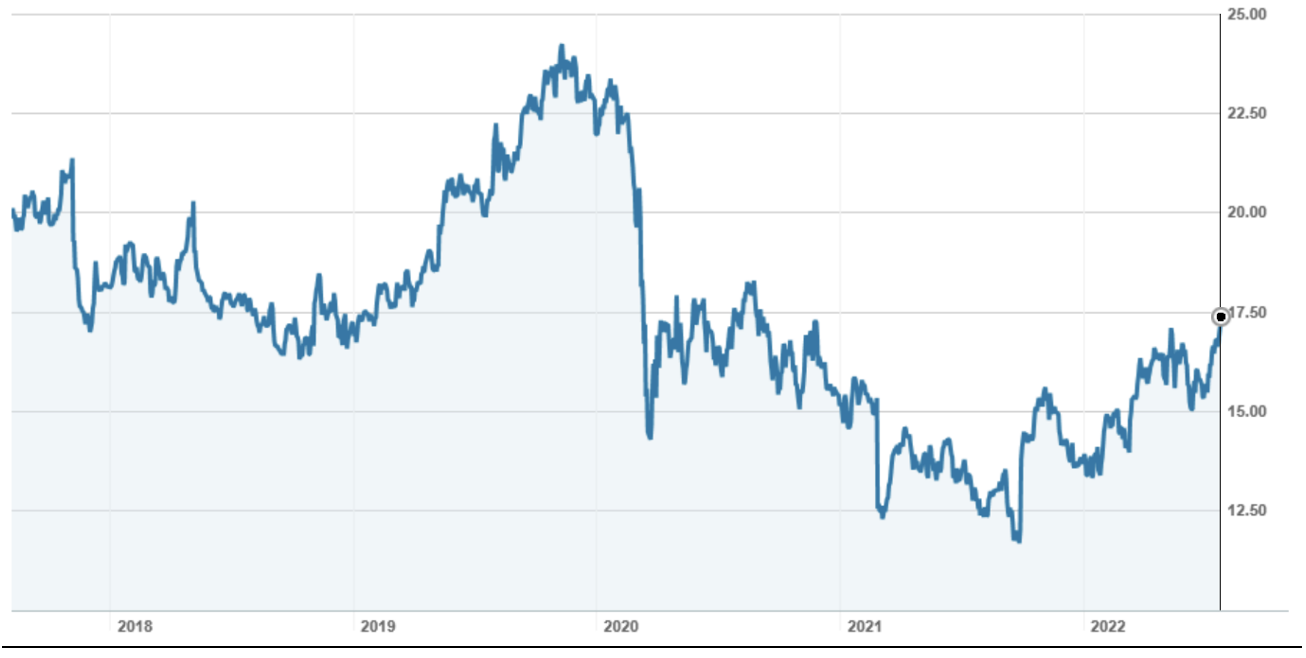Explosives, blasting systems and mining chemicals provider Orica (ORI) is going “up the value chain” with its $350 million acquisition of Axis Mining Technology and $725 million capital raising. This is part of a strategic push to be “the world’s leading mining and infrastructure solutions company”, which includes the provision of orebody intelligence products and participation in the digitisation of the mining value chain.
Axis is a leader in the design, development and manufacture of specialised geospatial mining tools. These tools are used to determine the location and orientation of drill holes and collection samples. Based in Australia and the UK, it distributes products to over 30 countries, with commodity exposure geared to gold and copper.
Strategically, Axis targets long-term industry trends driving demand for orebody intelligence products:
- Decarbonisation and energy transition driving demand for minerals such as copper, cobalt, manganese and nickel (continued investment in mining projects requiring geospatial technology);
- New mineral discoveries are located further underground (uptake of geospatial technology is greater for deeper underground mining);
- Mining companies seeking productivity gains (increased deployment of technology); and
- Commodity prices remaining positive.
For Orica with its 13,000 employees and 28 traditional manufacturing plants across the globe, Axis augments its ‘end to end, mine to mill’ solution offering. It will accelerate Orica’s capabilities to support new mineral discoveries required for decarbonisation (which are increasingly located at greater depth and demand more precise geophysics) and its transition to supporting a broader mix of commodities (in particular, the “new age” minerals).
Financially, Orica is paying $260 million in cash plus a deferred earn-out of up to $90 million based on the cumulative EBITDA Axis generates over the period to the end of 2024. Orica says that the upfront purchase price represents a multiple of 11.8 times FY22 EBITDA, implying current year EBITDA for Axis of $22 million. The acquisition and placement is “expected to be EPS (earnings per share) accretive for Orica from the first full year of ownership”.
Capital raising
To fund the purchase, Orica is raising up to $725 million. $350 million will go to the purchase, another $18 million in transaction costs, with the balance of up to $357 million for working capital and to strengthen the balance sheet. Orica’s proforma gearing will reduce from 38.3% to less than 27.9%.
The capital raising is in two parts. A fully underwritten placement of $650 million to institutions at $16.00 per share. This represents a 7% discount to the last traded price for Orica shares of $17.20. The placement will result in approximately 40.6 million new shares being issued, representing about 9.9% of Orica’s existing issued capital.
Orica (ORI) – 8/17 to 8/22

Retail shareholders will be able to take part in a non-underwritten share purchase plan of up to $75 million. They can apply for up to $30,000 of new shares, which will be issued at a price which is the lesser of $16.00 (the price the institutions pay), or a 2% discount to the average ASX trading price for Orica shares in the lead-up to the close of the plan.
The share purchase plan opens on 10 August and closes on 26 August.
What do the brokers say?
Prior to the announcement of the acquisition, the brokers were largely neutral on Orica, with inflationary pressures and energy costs acting as headwinds to near-term earnings prospects. According to FNArena, they viewed Orica as fully priced, with the consensus target price of $17.42 just 1.3% higher than the last ASX price.
Individual recommendations and target prices are set out in the table below:

The brokers had Orica trading on a multiple of 24.0 times FY22 earnings and 20.2 times FY23 earnings.
In conjunction with the acquisition announcement, Orica confirmed prior profit guidance for FY22 (the financial year ends on 30 September). This pointed to an increase in earnings and margins as a result of volume growth, increased adoption of Orica’s advanced technology offerings, supply chain efficiencies, overhead reductions and pricing discipline. However, inflationary pressures and higher energy costs are expected to remain ongoing challenges in FY23.
My sense is that the brokers will view today’s announcement along these lines:
- The acquisition is strategic and makes sense;
- 8 times EBITDA represents a fairly full price;
- In the short term, it is unlikely to “move the dial” for Orica (revisions to EPS forecasts will be minimal); and
- While dilutive, raising additional capital to reduce gearing and improve working capital is financially prudent.
How to play
Although Orica is transitioning, and Axis takes them one step closer, I don’t get a sense that it is a ‘screaming buy’ or for that matter, a stock I really need to own. At 24x FY22 earnings and 20x FY23 earnings, it is not particularly cheap.
The 7% discount for the placement is tight, suggesting that the underwriters think there will be strong underlying demand from institutional investors. However, uncertainties over the global growth outlook and cost pressures are short-term headwinds and may temper demand.
Potential investors in the share purchase plan are protected from market movements until late August, so they can wait a few weeks and see how the stock trades before deciding whether to participate or not. An option for less keen participants might be to sell their existing Orica shares on the ASX with a view to replacing them at a lower price in the SPP.
Important: This content has been prepared without taking account of the objectives, financial situation or needs of any particular individual. It does not constitute formal advice. Consider the appropriateness of the information in regards to your circumstances.

